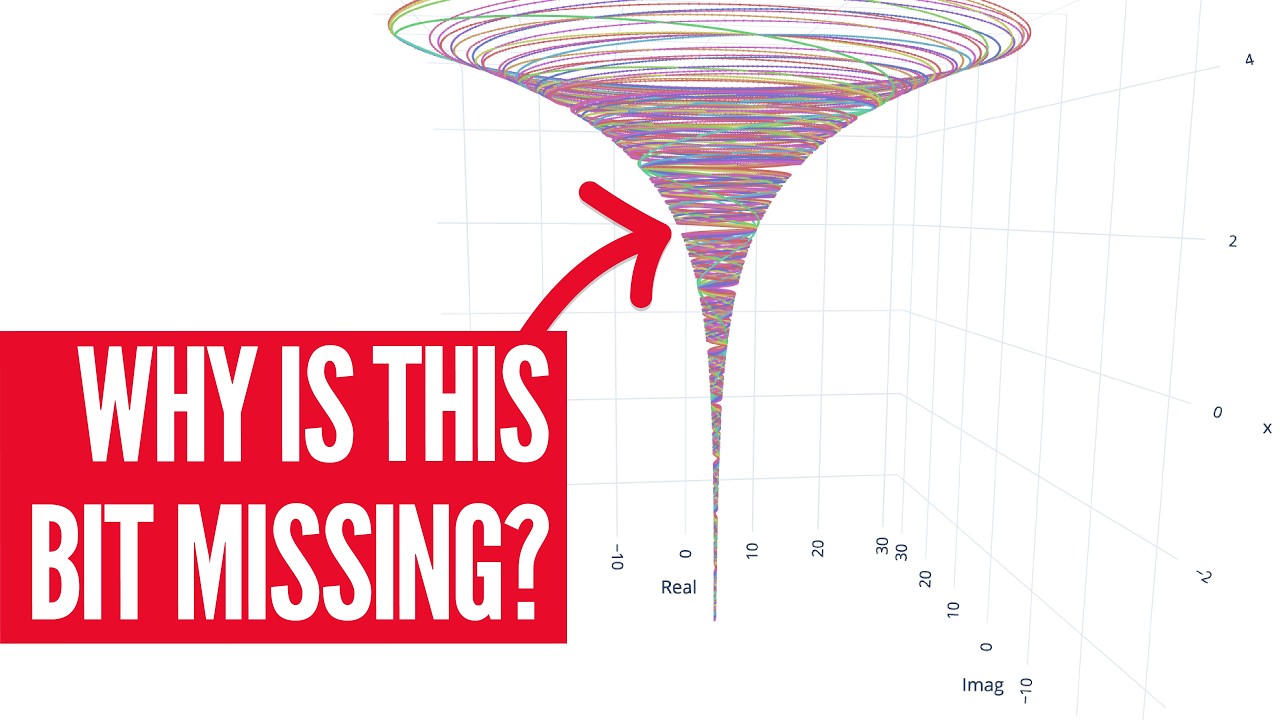The video explores the “maths trumpet,” a 3D visualization of the complex roots of negative numbers raised to fractional powers, demonstrating how these roots form continuous surfaces and intricate patterns on the complex plane. It combines interactive visualizations, 3D printed models, and explanations of complex numbers and roots of unity to reveal the mathematical beauty and structure behind this intriguing object.
The video explores the intriguing mathematical object known as the “maths trumpet,” which first appeared on Reddit about six years ago but initially received little attention. The maths trumpet is a visual representation of the complex values of negative numbers raised to fractional powers, such as -2 to the power of x, where x can be a fraction. The presenter delves into the concept of fractional powers representing roots, explaining how roots can yield multiple solutions, which correspond to the multiple lines seen in the maths trumpet image. This leads to an investigation of complex numbers and their roots, highlighting that taking roots of negative numbers involves complex solutions.
Using interactive GeoGebra visualizations, the video demonstrates how complex roots behave, showing that for any complex number, there are always two square roots that are symmetric on the complex plane. The presenter extends this idea to nth roots and introduces the concept of roots of unity, which are the nth roots of one. These roots form regular polygons on the complex plane, such as a square for the fourth roots of unity. By combining these ideas, the maths trumpet is understood as a continuous 3D surface formed by plotting the complex roots of -2 raised to fractional powers, with the third dimension representing the fractional exponent.
The video features a custom-built interactive 3D model called the “-2 to the x explorer,” which vividly recreates the maths trumpet. By toggling different roots, viewers can see how the trumpet shape emerges from the complex roots’ behavior as the fractional exponent varies continuously. The presenter also 3D printed a physical model of the trumpet surface, which surprisingly produces a sound reminiscent of a real trumpet, adding a tangible dimension to the mathematical concept. This physical model helps visualize the continuous nature of the principal root as it changes with the exponent.
A significant part of the discussion focuses on the number of roots for fractional powers, which depends on the denominator of the fractional exponent when expressed as a fraction m/n. The video explains that the number of solutions corresponds to n, the denominator, and that as the exponent varies continuously, the roots form continuous lines on the trumpet surface. Points where fewer roots exist cause the lines to overlap, creating gaps or wedges in the trumpet shape. The presenter also shows 3D printed cones illustrating these roots and their intersections, further clarifying the structure of the maths trumpet.
Towards the end, the video briefly promotes Bamboo Lab 3D printers, praising their reliability and ease of use, and highlights the practical aspect of 3D printing mathematical objects like the maths trumpet and ancient Babylonian tablets. The presenter invites viewers to explore the interactive code and 3D print files made available by collaborators. Finally, the video concludes with an invitation to attend live shows and events, blending the excitement of mathematical discovery with engaging public outreach.
